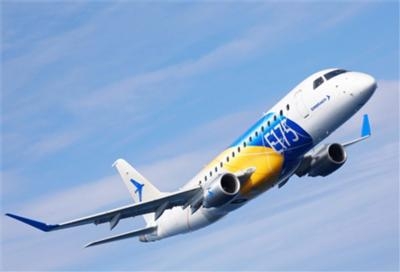Releases Market Outlook For The Regions At Regional Airline Conference In Germany
Embraer has released its Market Outlook for Europe and the Commonwealth of Independent States (CIS). The company forecasts that these markets will demand 1,540 new aircraft deliveries in the 70 to 130-seat jet segment, valued at some $72 billion at list prices, over the next 20 years. This is the second largest market worldwide for the segment with a fleet growing from 740 to 1,560 units by 2034.

The forecast was presented at the European Regions Airline Association (ERA) Annual General Assembly, held in Berlin, Germany.
The report points out that, in Europe, the focus on long-haul premium passengers is now close to absolute which, in turn, reinforces the importance of jets in the 70 to 130-seat segment to feed international flights. Traditional full-service carriers restructured in order to improve efficiency and reduce costs. The poor financial performance is not the result of weak traffic growth or load factors since RPK (Revenue Passenger kilometers, which is a measure of the volume of passengers carried by an airline) growth was solid at 5.8% in 2014 and the aggregate load factor was over 80%. However, pricing power for European airlines has declined significantly as supply has consistently outpaced demand. Yields have been decreasing 2% annually over the last 5 years. There is a further need for structural changes, business consolidation and capacity management. Hub feeding and differentiation of services to attract business passengers are options that will require right-sized aircraft in the 70 to 130-seat
segment.
In parallel, some LCCs are reaching the limit of growth in trunk routes. As opportunities to explore trunk routes are limited, low density markets are becoming more relevant in their networks. The imbalance between aircraft capacity and demand has led to an increase in the number of service cancellations — carriers withdrew from 460 markets in 2014 compared to 370 just three years before. High LCC growth rates cannot be maintained indefinitely. There is one market cancelled for each market opened, down from 2007 when LCCs opened 7 times more markets than they cancelled.

“The next frontier could potentially be the deployment of smaller capacity aircraft as LCCs may need to consider new strategies by accessing lower-density markets to sustain growth”, said Paulo Cesar Silva, President & CEO, Embraer Commercial Aviation.
In another development stage, intra-regional aviation in the CIS has been the fastest growing mode of transport as a key to improve links between cities. To support that growth, countries have changed their transport strategy and focused on the domestic market, making air travel more accessible to more people and providing global connections. Those changes include air transport liberalization and investments in the aerospace industry. New 70 to 130-seat aircraft are able to better match seat capacity to variations in demand and offer more connectivity by increasing frequencies and opening new markets.
(Image from file)
 ANN's Daily Aero-Linx (05.02.24)
ANN's Daily Aero-Linx (05.02.24) ANN's Daily Aero-Term (05.02.24): Touchdown Zone Lighting
ANN's Daily Aero-Term (05.02.24): Touchdown Zone Lighting Aero-News: Quote of the Day (05.02.24)
Aero-News: Quote of the Day (05.02.24) ANN FAQ: Contributing To Aero-TV
ANN FAQ: Contributing To Aero-TV NTSB Final Report: Cirrus Design Corp SR20
NTSB Final Report: Cirrus Design Corp SR20




